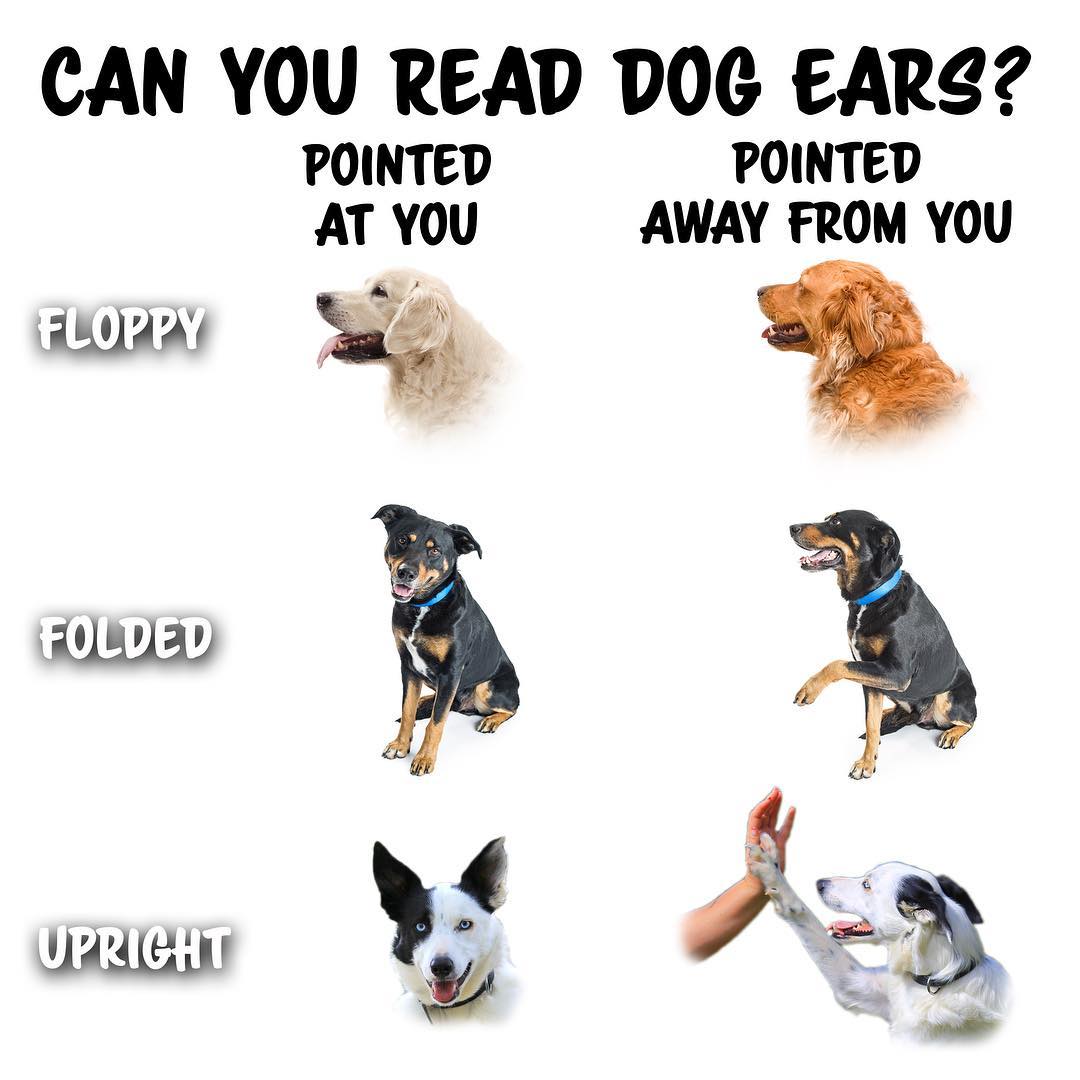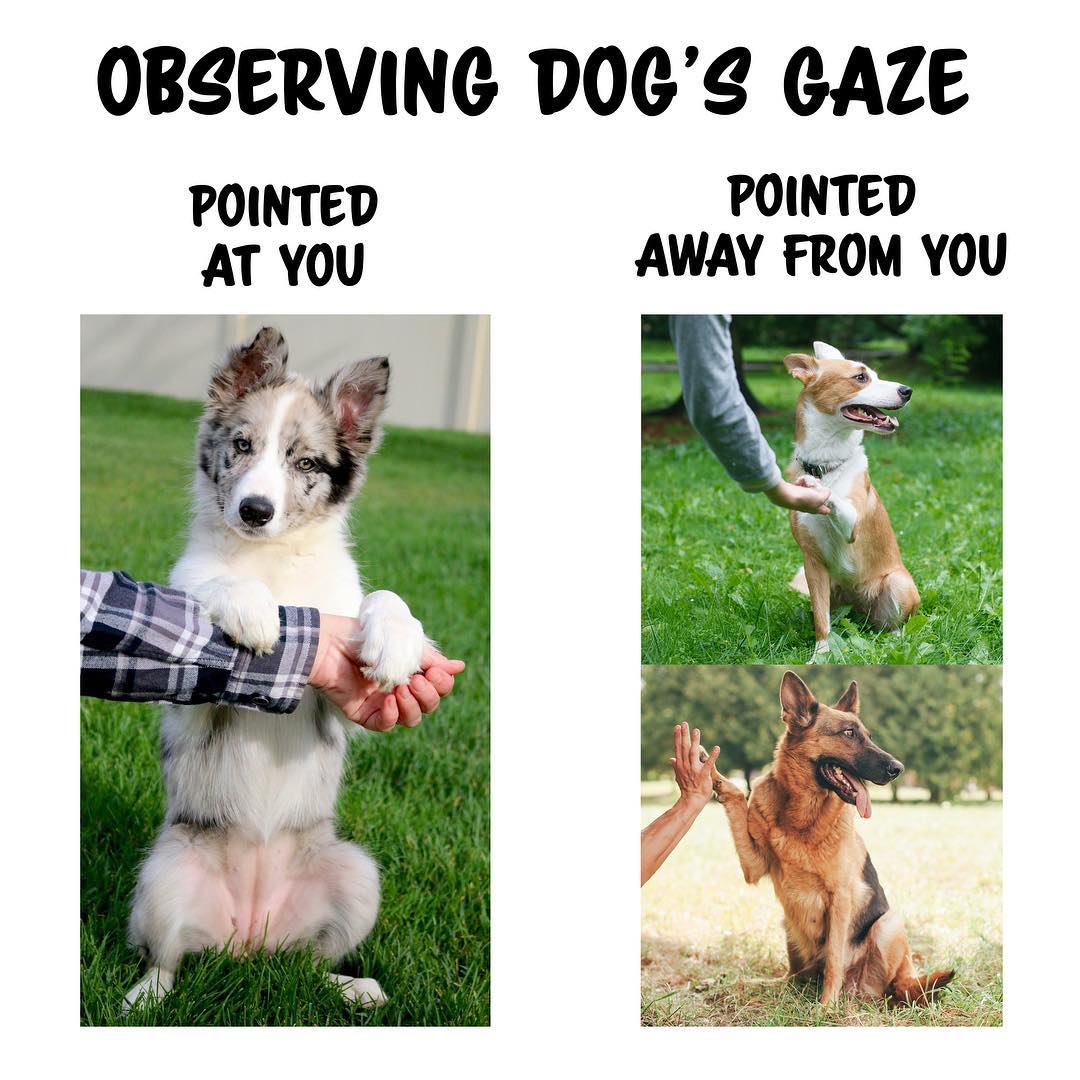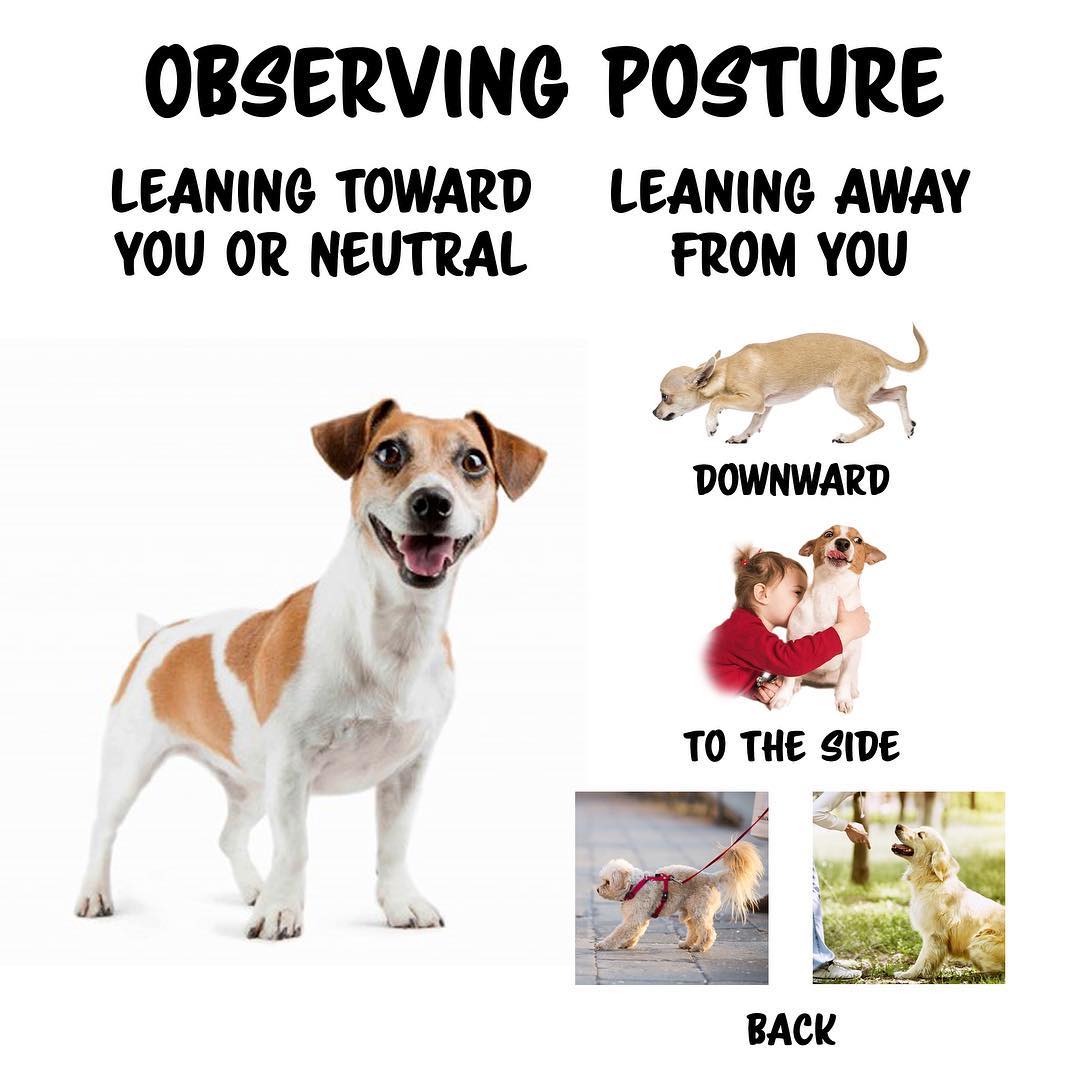This article describes how to read your dog’s body language in training sessions. Firstly we shall look at what the ears of the dog are telling us during a training session. When training a dog you want to shoot for the ear position on the left: POINTED AT YOU, relaxed or perky. I call these ears “expectant” they are expressing that the dog is expecting something to happen that he is not conflicted about. The ear positions on the right, POINTED AWAY FROM YOU give you information that your dog might be feeling somehow conflicted, uncomfortable or anxious.

Don’t panic if you see your dogs ears go back during training. Your dog is just communicating with you. When you see the ears go back, you can tweak your training plan by breaking the training up into smaller steps and trying to figure out what is making your dog feel uncomfortable so you can get those ears back up and looking perky or relaxed.
The ears are not the only sign your dog could be feeling conflicted or uncomfortable about a training task. Some dogs might be showing other signals but have relaxed or perky ears at the same time. For example, the dog really wants his ball that you are holding, and as you pet him his ears stay forward pointed at the ball but he hunches his head, closes his eyes and licks his lips many times. Ear movement however is quite an obvious signal, especially for beginner trainers and shouldn’t be ignored as they give you so much information.
Keep in mind if you are standing behind your dog and he is facing away from you, his ears will go back and point in your direction if he is listening to you. Your dog’s ears will also move around if he is listening to sounds in the environment. This is also information though, as when his ears are moving around, he will not be as focused on learning so don’t train a new behavior in a distracting environment until you have his full focus. Dogs also put their ears back in every day life when greeting dogs or people. This is normal dog behavior.
Want to become a trainer that is great at reading dogs? Film your training sessions, and when you watch back the footage, pay attention to just one part of your dog’s body during the whole session – his eyes, his mouth, his neck, feet, body posture or ears. To begin with, watch your dog’s ears. By watching back the footage you will see things you missed while training.

When a dog is directly in front of you during a training session, the dog’s gaze should ideally be POINTED AT YOU, the reinforcement or in the direction of the task. If you notice the dog’s gaze start to POINT AWAY FROM YOU or the task, this gives you vital information about what to do next in the training session.
Dogs can look away during training for many reasons. Some reasons include, that the dog is uncomfortable or stressed, that the reinforcement is not of high enough value, the session has gone on too long or that the dog is simply distracted by the surrounding environment. Regardless of the reasons, the dog is not paying 100% attention and is not 100% in the training game. When a dog starts to look away, you can reassess if something is causing the dog to feel uncomfortable. There could be some unintended social pressure you were unaware of, for example the dog could perhaps be feeling uncomfortable that you are leaning over him. If you believe this is not the case, you can see if using a higher value of reinforcement will get your dog back in the game. If this does not work, it’s not a good idea to train new behaviors without having your dog’s full attention. You can either give your dog a break or you can ask for behaviors that your dog knows and loves and use a higher rate of reinforcement. It is normal for dogs to be slightly distracted during training when working in new environments for the first time. So I suggest when you begin training somewhere new, warm up with attention games, your dog’s strongest behaviors or a settle.
 In a training session with your dog in front of you take note of your dog’s body posture. The ideal picture is that your dog’s posture is relaxed in a neutral position or leaning toward you, the task or the reinforcement. When you see your dog’s neck and chest start to shift away from you, downward, to the side or back away from you or the task, this is giving you information. Imagine you are talking to someone and you see them leaning their chest and neck in your direction. They most likely feel comfortable with you and are engaged in what you have to say. Then you see them start to lean away from you… Something has changed. If they are just getting comfortable, that’s a different story. But if you see their center of their body start to point elsewhere… It is information. The same is true with dogs.
In a training session with your dog in front of you take note of your dog’s body posture. The ideal picture is that your dog’s posture is relaxed in a neutral position or leaning toward you, the task or the reinforcement. When you see your dog’s neck and chest start to shift away from you, downward, to the side or back away from you or the task, this is giving you information. Imagine you are talking to someone and you see them leaning their chest and neck in your direction. They most likely feel comfortable with you and are engaged in what you have to say. Then you see them start to lean away from you… Something has changed. If they are just getting comfortable, that’s a different story. But if you see their center of their body start to point elsewhere… It is information. The same is true with dogs.
This can also happen when working with objects. For example, you might cue your dog to put his front feet up on a platform but after he gets his treat, he backs away from it. This tells you that the dog finds some aspect of being near the object uncomfortable. This will happen with hands too. When you move to touch a dog, he might lean away from your hand. Take note of this. If you are petting your dog and you see him leaning in the opposite direction or lowering himself he might actually not find it reinforcing. Some dogs, love petting when food is not involved, but when working for food, being petted instead of getting a treat can be a punishing experience.
Observe your dog’s natural posture when he is relaxing and moving around in the environment. Some dogs will hold their head lower than others. In a training session when the dog’s natural position changes by moving further away from you or the task it tells you the dog might be feeling uninterested, uncomfortable or conflicted.
All dogs communicate differently with their body posture just like people. Also, outside of training sessions your dog might change his body posture according to different social scenarios. Your dog might have the tendency to greet you or other dogs with a submissive appeasing posture or lean away from another dog who is trying to lick him.
Just to note, I don’t condone having young kids hug dogs but used the picture for “leaning to the side” because it is a very good visual example of a dog feeling uncomfortable. You will also notice the facial expression is very telling.
Copyright Emily Larlham 2018
